Visit Cortona, Tuscany's hilltop gem with Etruscan roots, Renaissance art, and stunning Val di Chiana views, as seen in 'Under the Tuscan Sun'.
Read more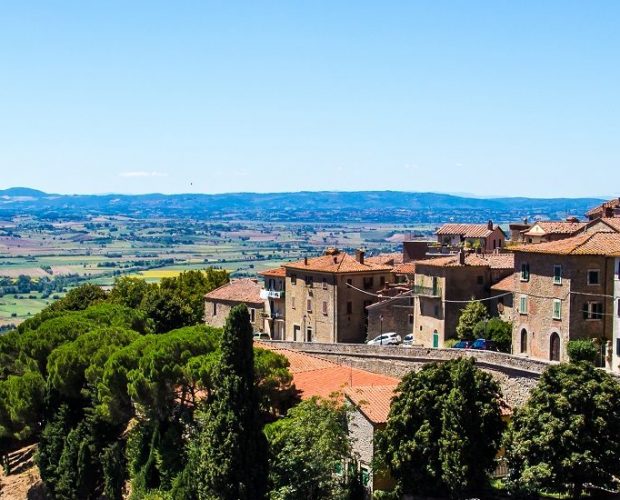
EXPLORE ALL OUR TUSCANY WINE REGION GUIDES
Last updated: May 6, 2024
Despite facing a number of obstacles, Morellino di Scansano is no longer an obscure vineyard under the radar of buyers and sommeliers. The journey has been difficult: historical lack of renown, a relatively isolated position in southern Tuscany, and fierce competition marginalized the region by most oenophiles, relegating it to a mere tourist curiosity sampled by day trippers to Grosetto. However, those who buck this trend will discover an exciting source of delicious Sangiovese wines – quite different in style from Chianti Classico and Vino Nobile di Montepulciano. Indeed, the voluptuous and punchy character of Morellino di Scansano stands as a world apart from the astringent dross still packaged in tourist-centric fiaschi. The area was awarded DOC status in 1978 (promoted to DOCG in 2007), although vines have been cultivated in southern Tuscany for over two millennia.
The name Morellino, incidentally, translates as “little dark one,” a reference to the small berries that ripen every summer under the dazzling sun. With varying levels of authenticity and credibility, many appellations tout their credentials as “Tuscany’s next big thing” or the region’s “greatest undiscovered secret.” Yet, you can believe the hype: Morellino di Scansano is leading the vanguard for emerging regions in 2024.
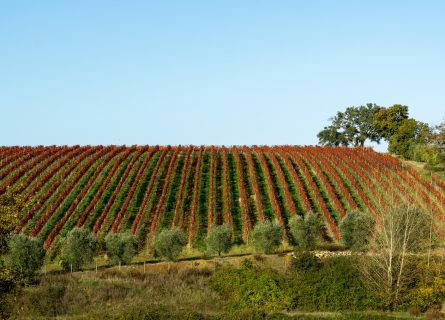
There is an embarrassment of natural riches in southwestern Tuscany, including gorgeous coastlines, hill towns sculpted from volcanic rock, and vine-covered slopes that produce delectable red wines. One of the most beautiful vineyards lies just south of Grosetto, bordered by the Ombrone River to the north and the Albegna to the south. With the pretty town of Scansano as its center point, the appellation makes an ideal day trip from Grosseto and the surrounding countryside. Over 170 growers manage about 1000 hectares of vineyards, with many belonging to the vitally important Cantina Vignaioli Scansano. This thriving cooperative understands more about this ancient region’s soils and terrain than any other producer working in Morellino di Scansano today.
Geographical and Climatic Advantages
The appellation boundaries encompass an area of 25 kilometers across, stretching from the village of Poggio Cavallo (just to the southeast of Grosetto) to Montemarno in the far eastern corner. It is reminiscent of Chianti Classico: rolling hills, olive groves, and the ubiquitous sight of hilltop villages that predate even the Romans! However, unlike central Tuscany, Morellino di Scansano benefits from its proximity to the Tyrrhenian Sea – maritime breezes offer a welcome respite from the intense heat in July and August. The Albegna River is also an important topographical feature of the landscape, providing moderating influences that prevent a lurch into high alcohol and jammy flavors. Nonetheless, ripeness is seldom a problem in balmy conditions nearer sea level; at higher elevations, diurnal temperature variation becomes a welcome factor in the quality equation.
Local soils, meanwhile, are rich in marine sediments: free-draining and infertile terroir that is perfect for vine cultivation. Generally, the appellation’s sandier terrain yields softer and more aromatic styles – the hilly interior’s volcanic soils are rich in minerals. Winemakers craft the most structured Sangiovese, and indeed Cabernet Sauvignon, in the northeastern corner of the zone, flanking the village of La Sabatina. Yet, while Morellino di Scansano is a seminal location for high-quality Sangiovese in the Maremma, a growing number of producers are also marketing Bordeaux blends under the Maremma Toscana DOC, in addition to dabbling in white wine production. The superlative quality of Scansano Petit Manseng and Chardonnay, the former pioneered by Le Pupille estate, suggests white varieties will have a defining role to play in the near future.
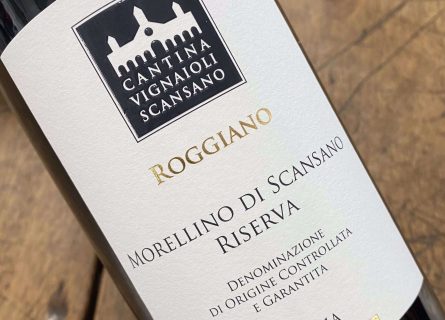
It is relatively easy to spot Morellino di Scansano in a blind tasting, particularly when benchmarked against Chianti Classico and Brunello di Montalcino. In short, the wines are often much fleshier, more supple, and arguably softer than the powerfully structured reds of central Tuscany. This is partly due to the warmer climate and regional wine law. According to the DOCG regulations, basic Morellino di Scansano can be released just eight months after the harvest; maturation in wood is not obligatory, in contrast to the rules governing the production of Chianti Classico and Bolgheri DOC. Many young wines are, therefore, characterized by bright, sappy fruit and lively freshness, free of any oak influences or flavors. They are very popular in the osterie of Florence and Siena, sold at prices that often undercut Tuscany’s more famous names.
Aging and Complexity
Morellino di Scansano Riserva, however, is entirely different. To qualify for Riserva status, winemakers must age the wine for at least two years – 12 months in wood, strengthening the structure and deepening the flavor. Bottled with a minimum ABV of 13 percent, Riservas are perhaps more similar to Brunello than Chianti: lush fruit allied to firm tannins and moderate acidity. A mosaic of tertiary aromas will emerge with age, most noticeably pomegranate, leather, garrigue, and damson. That said, Morellino di Scansano permits the inclusion of additional grape varieties in the blend, unlike Montalcino. These may include Cabernet Sauvignon, Canaiolo, the esoteric Ciliegiolo, or Montepulciano.
As elsewhere, winemaking techniques and philosophies will vary from property to property, albeit many of the best estates use a certain percentage of new oak for their top wines. Otherwise, it’s a familiar tale of fermentation in stainless steel or concrete, a moderate-to-high level of extraction (depending on the vintage and blend), and filtration before bottling. In commercial terms, some of the greatest success stories have been the unoaked cuvées sold at less than $25—the ideal pairing for local cheeses and charcuterie.
Cantina Vignaioli Scansano
One of the area’s most important producers is the Cantina Vignaioli Scansano. Founded in 1972, this dynamic and resourceful cooperative now cultivates 700 hectares of vines, shared by over 160 members. With a growing percentage of organic acreage and a broad portfolio of varieties, Cantina Vignaioli is in a strong position in 2014. It releases four million bottles annually, some of which are marketed as Maremma Toscana DOC wines.
Promoted from IGT to DOC status in 2011, this liberal designation is celebrated for the flexibility it affords winegrowers – a wide range of styles are sold under the appellation banner, including traditional method sparkling and velvety Bordeaux blends. The most impressive of these is Saffredi, originally made with the help of the late Giacomo Tachis, Antinori’s erstwhile consultant. It vies with Sassicaia and Ornellaia for the title of Tuscany’s greatest red.

Created as long ago as 1978, Morellino di Scansano is the Maremma’s leading producer of exceptional Sangiovese. The best is lively and tasty, packed full of cherry fruit with bright acidity and approachable tannins; mature vintages offer the finesse and complexity of a seminal Chianti Classico – Fontodi or Ricasoli, perhaps. Indeed, the appellation’s growers are in good company when pitched against Tuscany’s finest terroirs, holding their own in blind tastings and competitions. After a slow start, these deeply colored, full-flavored, and excellent-value wines are being quaffed, sipped, and uncorked outside Italy’s borders.
Yet, from the perspective of many critics and sommeliers, Sangiovese is not the star attraction here. Instead, they continue to lavish high praise on Saffredi, a wine pioneered by Fattoria Le Pupille owner Elisabetta Geppetti in the late 20th century. Interviewing Geppetti several years ago, she admitted: “Many of my friends believed I was foolish to invest in the Maremma region – it was not considered a premium winegrowing area in the 1980s, but I wanted to prove otherwise. However, we have been fortunate to work with several esteemed winemakers, including Giacomo Tachis – the oenologist behind Sassicaia and Tignanello – Riccardo Cotarella, Christian Le Sommer and, since 2012, Luca D’Attoma,”
Tasting Notes and Vintages of Saffredi
In 2020, I had the good fortune to sample a collection of older vintages, including the much-lauded 1995 and 2017. Reading back through my notes, I’m reminded of the awesome concentration and mind-blowing length that characterize this very singular blend of Cabernet Sauvignon, Merlot, and Petit Verdot; Alicante Bouschet, in addition to Syrah, was also used in past vintages.
Of the 2015 Saffredi, my notes read: “A very hot and dry growing season led to a very muscular, ripe incarnation of Saffredi. Aromas of tobacco leaf sit atop ripe berries with hints of spice. The tannins are firm and make a strong impression on the palate. Needs time.” Meanwhile, the cooler 2013 delighted our panel with its “leather, sour cherry and wild mushroom bouquet.” There was not one dud – or faulty bottle – in the entire lineup of 20 years. Granted, Saffredi lacks the international cachet and kudos of Ornellaia or the historical pedigree and hype that engulfs Sassicaia. But, in terms of quality, longevity, and the sheer brilliance of its winemaking, there is not an ounce between them.
Chardonnay is a green-skinned grape varietal native to the Burgundy wine region in France and one of the most popular varieties worldwide.
Find out moreThe sauvignon blanc grape varietal, originally from the Bordeaux region of France, is now one of the world's most loved white varieties.
Find out moreMalvasia Bianca, a historical grape from Greece, now thrives in Sicily and the Aeolian Islands, producing unique sweet wines.
Find out morePetit Manseng is a white grape grown mainly in the South West of France that produces high-quality sweet wines. It's one of France's best-kept wine secrets.
Find out moreCiliegiolo, a red grape from central and northwestern Italy, is gaining popularity in Liguria and Tuscany. It's featured in various Italian DOCs, including Chianti, and has seen a rise in varietal IGT wines since 2000. Known for its cherry-like color and aroma, Ciliegiolo adds freshness and liveliness to wines, catering to the demand for early-drinking yet characterful wines. The grape requires careful cultivation due to mildew susceptibility.
Colorino, a black-skinned grape from Tuscany, is used mainly for adding color to wines due to its deep pigmentation and high tannin levels. Popular in the 1990s for enhancing the hue of Sangiovese-based wines, its importance has waned with improved winemaking and vineyard practices.
Discover the irresistible allure of Cabernet Sauvignon—a worldwide favorite with robust, dark-bodied flavor. Unleash your wine journey today!
Find out moreMerlot is the most cultivated grape in Bordeaux and closely related to Cabernet Franc
Find out moreUnearthing Sangiovese: Italy's Ancient Grape with a Complex History. Explore its journey from Etruscans to modern-day excellence.
Find out moreSyrah is dark-skinned and perhaps the most underrated of the 'noble' red grape varieties.
Find out more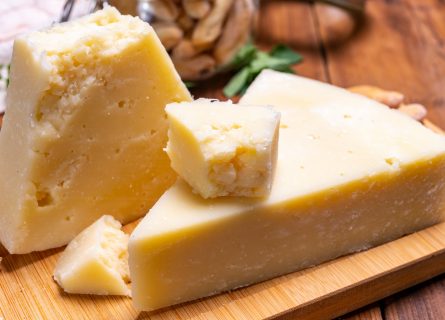
Grosseto is an underrated gem. Its centro storico (historic center) has a great selection of lively places to eat and drink. The choices range from the straightforwardly rustic—platters piled high with charcuterie and local cheeses—to rich pasta dishes, wild boar, and rib-eye steaks from the Terre Regionali Toscana farm. However, most wine bars will also serve spuntini (snacks) to graze on if you don’t feel like a full meal.

Visit Cortona, Tuscany's hilltop gem with Etruscan roots, Renaissance art, and stunning Val di Chiana views, as seen in 'Under the Tuscan Sun'.
Read more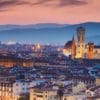
Explore Florence: A Renaissance marvel with stunning art, architecture, and a rich winemaking legacy, in the heart of Tuscany.
Read more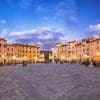
Explore Lucca, a tranquil Tuscan town with 16th-century walls, charming lanes, rich musical history, and picturesque biking trails.
Read more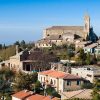
Explore Montalcino's Medieval Charm and Savor Brunello Wine. Discover Italy's Treasured Village on Your Tuscan Journey.
Read more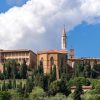
Discover Pienza's Renaissance Charm and Rich History in the Heart of Tuscany's Val d'Orcia. Explore Etruscan Roots, Renaissance Architecture, and Timeless Beauty.
Read more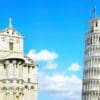
Discover Pisa's Rich History and La Dolce Vita - Beyond the Leaning Tower. Explore a Cultural Gem in Northern Tuscany.
Read more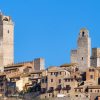
Explore San Gimignano, Tuscany's 'medieval Manhattan', with historic towers, charming streets, fine wines, and a rich, romantic history.
Read more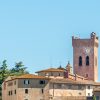
Discover San Miniato, the Tuscan gem: medieval allure, renowned truffle festival, diverse cultural theater, and panoramic valley views.
Read more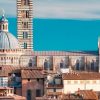
Discover Siena, a Tuscan gem with rich history, stunning medieval architecture, cultural wonders, and proximity to Italy's famous wine regions.
Read more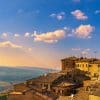
Volterra, 'Little Rome': A Tuscan gem where Etruscan artistry, medieval charm, and Renaissance beauty blend in a picturesque setting.
Read moreIf you would like us to customize an exclusive luxury tour, contact us and let us know your travel plans. We offer luxury food and wine tours for private groups of a minimum two guests. In addition, all of our private, chauffeured tours are available year-round upon request.

